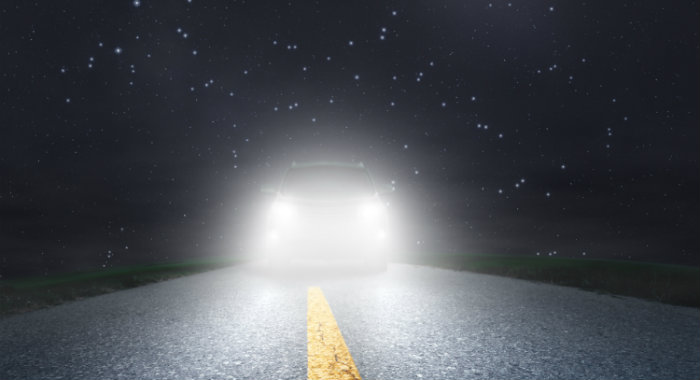Contact Us
Two Pershing Square 2300 Main Street, Suite 170 Kansas City MO 64108Two Pershing Square
2300 Main Street, Suite 170
Kansas City, MO 64108
Directions
Telephone: (816) 221-6600
Toll Free: 1 (877) 284-6600
Fax: (816) 221-6612

Unfortunately, as the light fades, driving at night gets more dangerous. Road fatalities triple during the night. Obstacles and risks arise you do not have to deal with during the day. Some drivers have vision problem such as night blindness and reduced vision. We hope these road safety tips will help you navigate the dangers of night driving more safely.
Night time driving presents obstacles and risks that you do not have to deal with during the day, such as shorter days and compromised night vision. In addition, the everyday risks become a little more dangerous under the cover of darkness.
 The eyes, in general, are terrible at seeing at night with depth perception, peripheral vision and the ability to distinguish color diminished.
The eyes, in general, are terrible at seeing at night with depth perception, peripheral vision and the ability to distinguish color diminished.
Because your vision accounts for nearly 90% of your reaction while driving, night time driving dramatically decreases your ability to effectively respond to potential hazards on the road. Even with high-beam headlights on, your visibility is limited to about 350 to 500 feet (160 to 250 feet with normal headlights), meaning there is less time to react.
Night blindness is a condition that makes it hard to see in poor light or at night. Symptoms include:
Night time driving is made more dangerous by the following factors.
Reduced visibility. At night, we no longer have natural light to help us see road signs, other drivers, pedestrians, debris in the road, animals, and other obstacles. It also makes it more difficult to judge the distance between your car and another car. Driving at night means relying on headlights and street lights, which don’t provide the same visibility that natural light does.
Age factors. Unfortunately, as we age, our ability to see at night deteriorates. In addition, older drivers may have compromised vision due to cataracts and degenerative eye diseases.
Rush hour. Any time of the year, rush hour can be a dangerous driving time. As the days get shorter and darkness comes earlier, the drive time becomes more dangerous especially when driving in stop-and-go or bumper-to-bumper traffic.
Drowsy or fatigued driving. A study published by the National Sleep Foundation tells us that sleep-deprived drivers are the cause of 6,400 deaths and 50,000 serious injuries annually on our roads. A drowsy driver’s reaction times are greatly reduced. Fatigued drivers can be on the road any time of the day, but night time hours (especially from 3 a.m. to 7 a.m.) are the prime time.
Driving under the influence. Impaired drivers are more likely to be on the road after dark, between the hours of midnight to 3 a.m. on weekends. There is a higher risk of sharing the road with an impaired driver at night as people leave restaurants and bars. According to the National Safety Council, weekend nights are the worst part of the week for fatal accidents

Distracted by the cell phone while driving at night.
Distracted drivers. We already know that anything that takes your hands off the wheel, eyes off the road and mind off driving is a distraction. This can be an even deadlier combination at night.
Construction activity. Often, road construction happens in the evening hours. With poor light and other factors, it can be difficult to see construction work zones and you can get blinded by the bright work lights being used.
Do you need a personal injury attorney? Contact us at (877) 284-6600.
When you are seriously injured in an accident, you need an experienced personal injury attorney who will collect all the facts about what happened, assess your injuries and answer questions about your concerns.
Call us at (877) 284-6600 or contact our office online. We have a successful track record of helping accident victims collect the compensation they deserve. One of our experienced staff will speak with you personally and will provide you with a free, no-obligation review of your case.
CONTACT US FOR A FREE REVIEW OF YOUR CASE
Would you like to receive news and blog updates on a regular basis? Sign up to receive our email newsletter. Your email address will only be used to send you our newsletter and respond to inquiries.
Past results afford no guarantee of future results and each case is different and is judged on its own merits. The choice of a lawyer is an important decision and should not be based solely upon advertisements.
Editor’s Note: This post was originally published October 22, 2018. It was reviewed on October 3, 2023 and updated for content and accuracy.